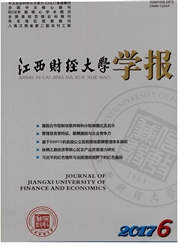

 中文摘要:
中文摘要:
基于2000—2013年东、中、西部(30个省、市、区)的面板数据,实证分析基础设施投资对中国东、中、西部区域经济增长的时间、空间效应。结果表明:2000—2007年基础设施投资对西部区域、中部区域经济发展有显著促进作用,对东部有阻碍作用但不显著;2008—2013年对中部有显著阻碍作用,对东部区域、西部区域有阻碍作用但不显著;促进东部地区经济增长的决定因素是固定资产投资、劳动力数量。
 英文摘要:
英文摘要:
On the basis of the panel data of 30 provinces from 2000 to 2013, this research analyzes the time, the spatial effect and the conduction path of infrastructure investment on regional economic growth empirically. Under four variables of investment including labor, fixed assets investment, population density as well as foreign direct investment, it shows that infrastructure investment from 2000 to 2008 has a significant role in promoting the economic development in the western region and the central region, hindering the role for the East, but not significantly. Infrastructure investment from 2008 to 2013 has a significant impediment to the central role. Infrastructure investment to the eastern region and the western region has no significant obstacles. In the study of conduction path, we can see that the decisive factor to promote economic growth in the eastern region is the fixed assets investment, the quantity of the labor force and the quality factor. Therefore, fixed assets investment should be increased and the structure of talent training should be adjusted in the eastern region. Infrastructure investment and fixed assets investment should be gradually increased in the west and the central region for providing convenient conditions for economic development.
 同期刊论文项目
同期刊论文项目
 同项目期刊论文
同项目期刊论文
 期刊信息
期刊信息
